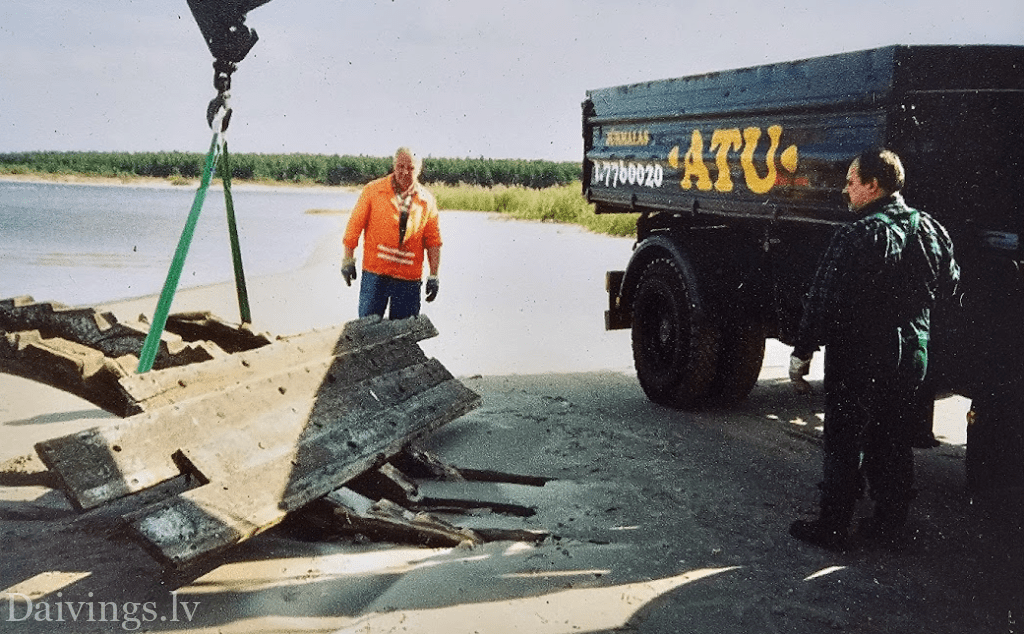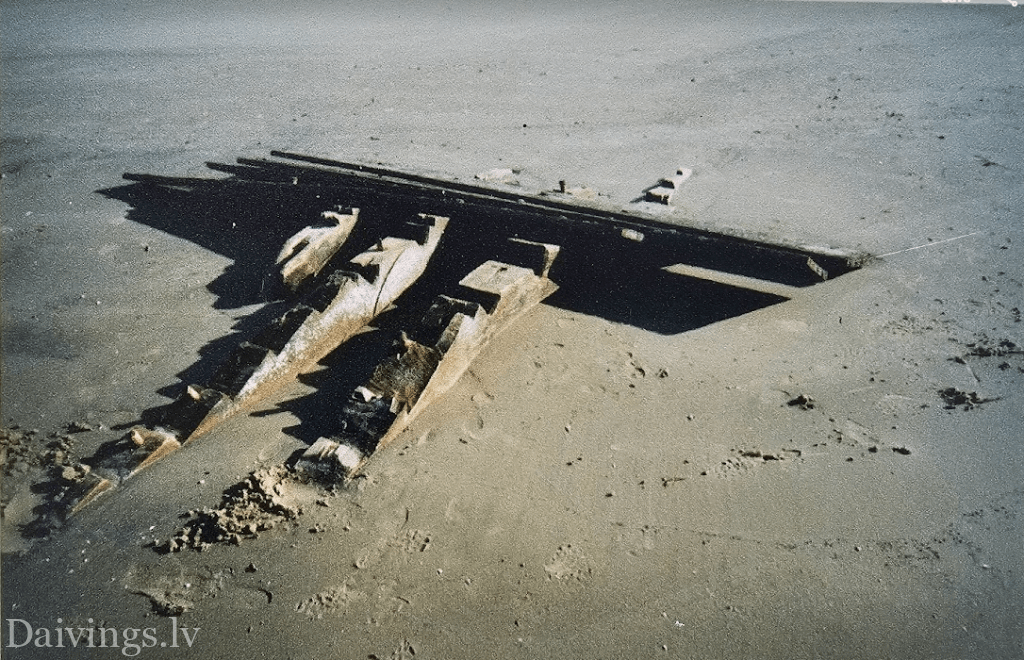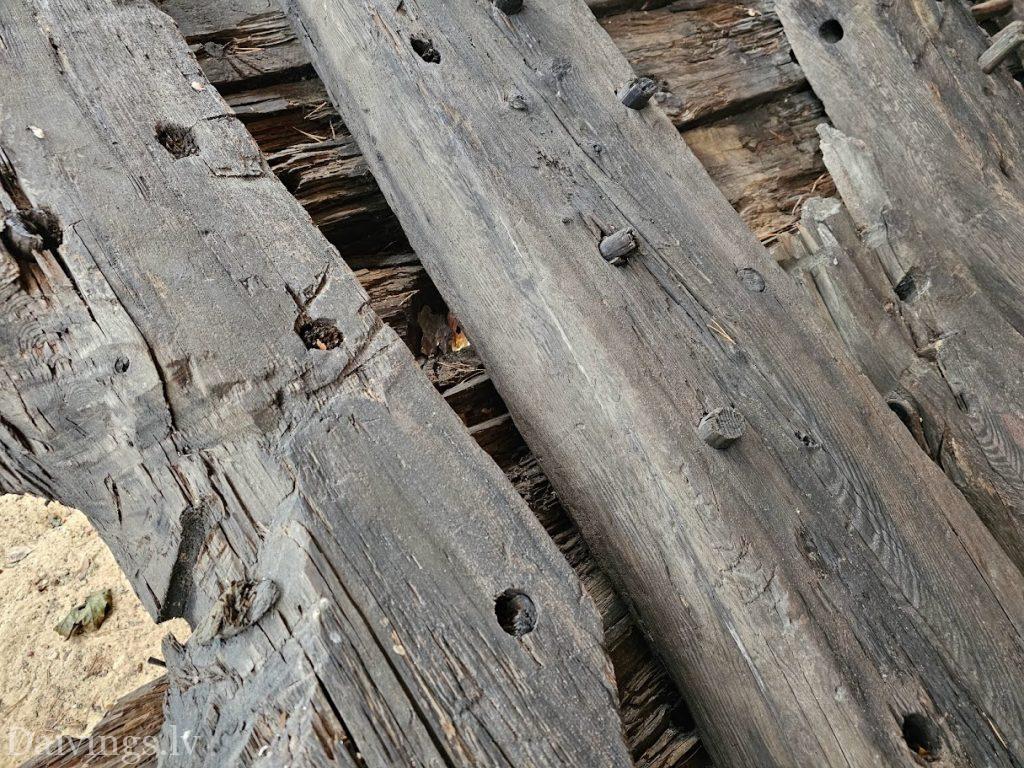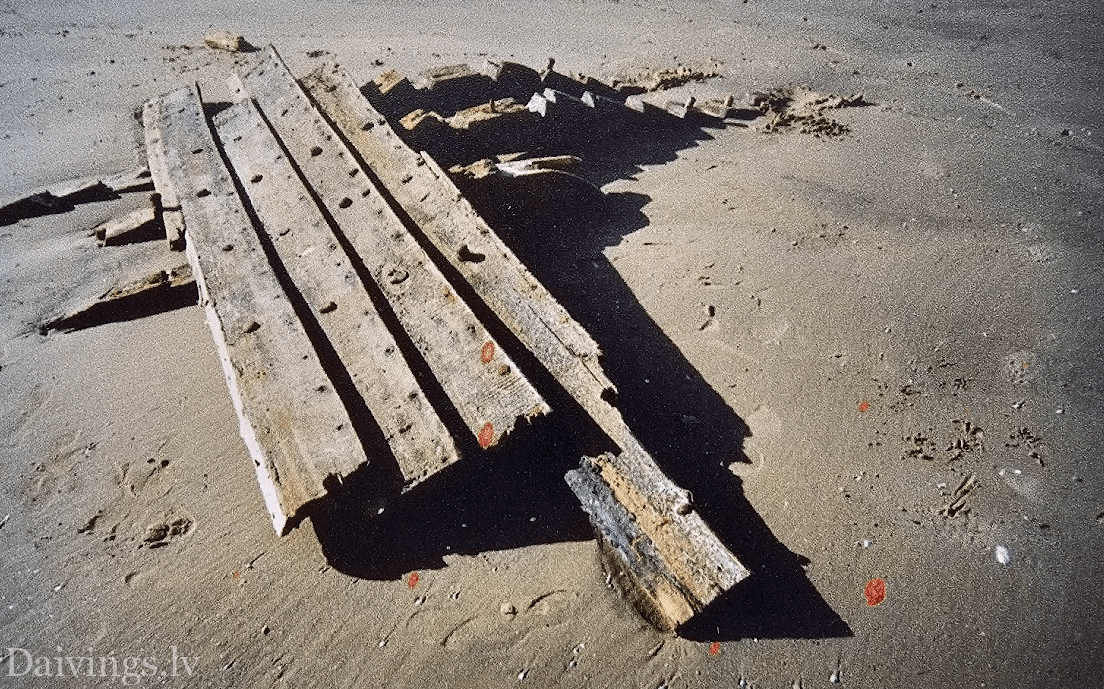A fragment of the Lielupe wooden sailboat wreck was washed out of the Gulf of Riga
The Baltic Sea is rich in historical evidence, including historic shipwrecks. From the early Middle Ages to the 21st century, ships belonging to various cultures and nations have sunk in the Baltic Sea, including the Vikings, the Livonian Order, the Russian Empire and the USSR. One of the most interesting historical shipwrecks in the Baltic Sea is a fragment of the Lielupe sailing ship wreck, which was found on the beach of Jūrmala in 2004.
The history of finding the wreck at the mouth of Lielupe
- In September 2013, a part of the shipwreck and several parts were washed up on a sand bar on the Jūrmala beach at the Lielupe estuary. The found wreckage fragment was moved to the nearby Jūrmala Open Air Museum in order to protect it from destruction and repeated washing into the sea.

Description of the wreck
The wreckage fragment is approximately 10 meters long and 5 meters wide. It is made of wood and clearly shows the edges of the brangs, or so-called ribs. The beams are not smoothed, and some even have parts of pine bark, which indicates a rather primitive woodworking. There are few metal parts in the ship.


The origin of the wreck
Specialists in underwater history concluded that the sailing ship could have been built in Latvia according to the model of Swedish ship construction, in the period from the 17th century. until the 19th century Belonging to local manufacturers is indicated by the processing of primitive wood.

The possible scenario of the wreck
It is thought that the ship could not enter the mouth of the river during the storm, ran aground and perished. In order to accurately determine the age and origin of the sail, it is necessary to carry out additional research and analyzes of the wood.
What is the meaning of Lielupe's sail?
The fragment of the shipwreck of Lielupe is a unique historical testimony that tells about the development of shipping in the Baltic Sea. The ship is well preserved and offers an opportunity to explore Latvian history and culture.
Contacts
If you want to know more about the fragment of the Lielupe sailboat wreck, visit the Jurmala Open Air Museum or book a guided tour to it, please contact the Jurmala Open Air Museum. Underwater diving club "Daivings" invites you to see the museum in person, which can be combined with a visit to Ragakāpa Nature Park. Our contact information is provided at the end of this article.
Wooden wrecks in the Baltic Sea: a rich historical legacy
The Baltic Sea is rich in historical evidence, including wooden shipwrecks. About 40 shipwrecks are known off the coast of Latvia, dating from different times, from the Viking Age to the end of the 20th century.
There are several reasons why wooden ships survive so well in the Baltic Sea. First of all, the sea is relatively cold and dark, which has a negative effect on the microorganisms that damage the trees. Secondly, the water of the Baltic Sea is not too salty, which also helps to preserve the wood. Finally, the Baltic Sea is not as deep as other seas and oceans, which means that wrecks are less prone to water movement and erosion.
Underwater diving club "Daivings" - historical shipwrecks in the Baltic Sea
The Baltic Sea is rich in historical evidence, including historic shipwrecks. From the early Middle Ages to the 21st century, ships belonging to various cultures and nations have sunk in the Baltic Sea, including the Vikings, the Livonian Order, the Russian Empire and the USSR.
Underwater diving club "Daivings" collects information about these shipwrecks. On our website you can find information about shipwreck locations, their history and diving conditions.
We also offer diving tours to some of the most interesting historical shipwrecks in the Baltic Sea. Our diving instructors are qualified and experienced and will help you enjoy this exciting experience in a safe and enjoyable way.
If you are interested in history, diving, or both, then be sure to visit our website and learn more about historic shipwrecks in the Baltic Sea.
Contacts for underwater diving excursions:
- PADI instructor Walter
- Phone/WhatsApp: 220-77-202

